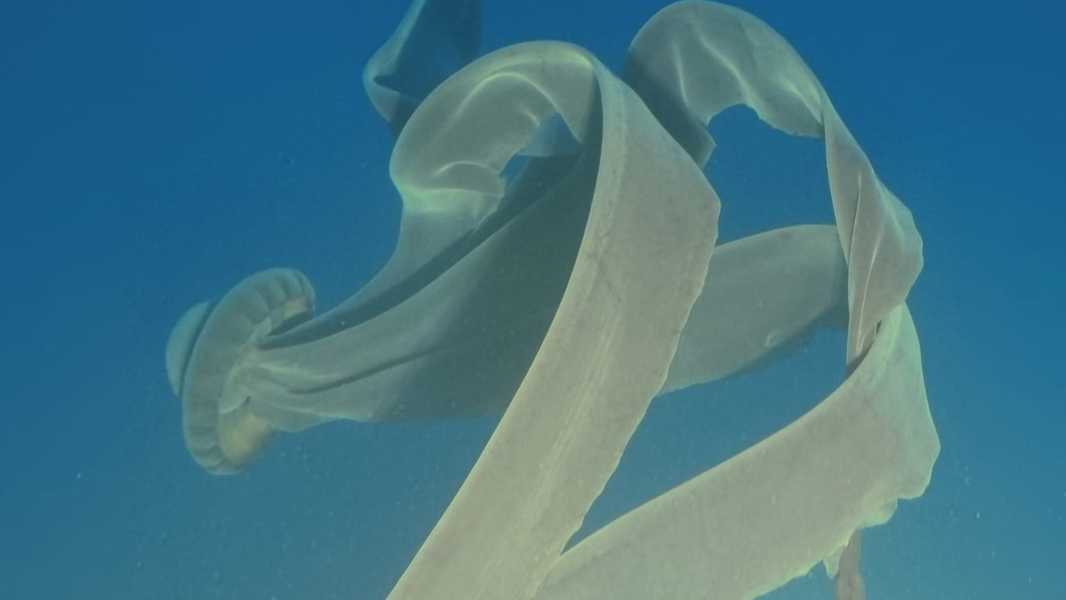
A giant ghost jellyfish (Stygiomedusa gigantea) found off the coast of the Antarctic Peninsula during the Viking cruise. (Photo courtesy of Anthony Gilbert)
Name: Giant ghost jellyfish (Stygiomedusa gigantea).
Habitat: In the oceans, except for the Arctic Ocean.
What it eats: plankton and small fish.
Why it's amazing: Our planet's oceans are home to a variety of secretive and unusual creatures that are rarely seen by humans — including giant ghost jellyfish. These elusive creatures of the deep have a bell that's 3.3 feet (1 meter) in diameter and four ribbon-like tentacles that can reach 33 feet (10 m) in length, making them some of the largest invertebrate predators in the sea.
The first specimen of the giant ghost jellyfish was collected in 1899 and described in 1910. Since then, the species has only been observed about 120 times. This is because these jellyfish typically live in deep waters, up to 22,000 feet (6,700 m) below the surface.
Their bodies are able to compress and flatten, allowing them to cope with the enormous pressures they are subjected to at such depths.
In 2022, researchers recorded sightings of giant ghost jellyfish on three separate occasions during underwater expeditions to Antarctica, where video and images showed the creatures at relatively shallow depths of between 260 and 920 feet (80 and 280 m). In a study describing the sightings, the scientists noted that the jellyfish likely live closer to the surface at high southern latitudes, as seasonal changes in sunlight can push prey upward.
Unlike other jellyfish, giant ghost jellyfish do not have stinging tentacles to catch food. Instead, they grab their prey — usually plankton or small fish — with their arms and pull it toward their mouths.
Giant ghost jellyfish are also unique in that they are viviparous, meaning they give birth to live young. The young develop inside the mother before breaking away from the hood and swimming out of the mother's mouth.
When visible light is present, giant ghost jellyfish emit a soft orange-red glow through bioluminescence—that is, they create light through natural chemical reactions. The exact reason for their glow is not known, but scientists speculate that it may be for communication, to confuse predators, to attract prey, or to find potential mates. However, because these jellyfish live in deep waters where red light does not penetrate very far, their glow is very faint, which likely helps them remain undetected.
These jellyfish are solitary, but they also appear to help protect smaller marine organisms. During an expedition to the Gulf of California, researchers from the Monterey Bay Aquarium Research Institute spotted a small fish, the pelagic brotula (Thalassobathia pelagica), sheltering underneath a giant ghost jellyfish. In return, the fish helped the jellyfish by cleaning it of parasites.
TOPICS amazing animals
Sourse: www.livescience.com





